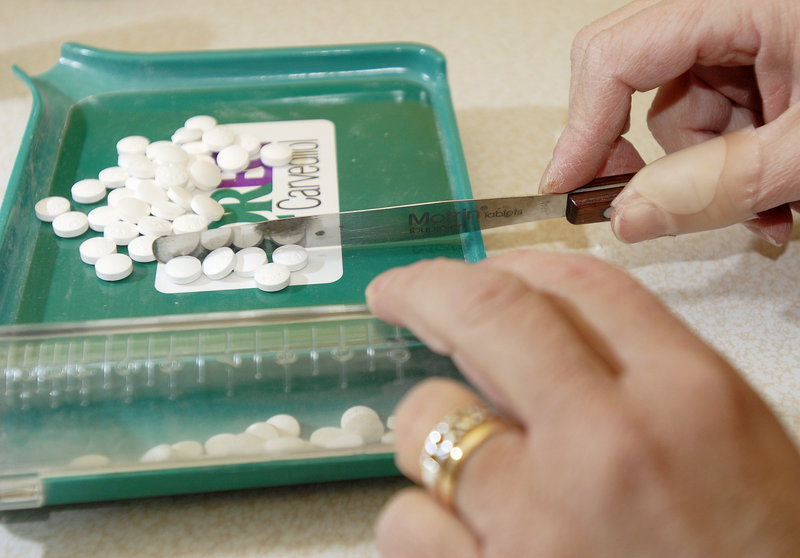There was another article on prescription medication abuse in The Portland Press Herald (April 6).
This one, however, tried to tie improving pain management with increasing addiction, although there is no evidence to support this.
If anything, the “addiction epidemic” is media driven.
The people who need and use opioids to manage their pain are not the ones diverting medication, overdosing or robbing pharmacies.
The article equates physical dependence with addiction.
This is not the case.
Addiction is a persistent compulsive use of a substance known by the user to be harmful.
Physical dependence occurs with other medication such as steroids or antidepressants.
The body is used to having a medication so in the case of opioids, endorphins and enkephalins, it stops making its own form.
When prescribed by a knowledgeable prescriber and used as prescribed, opioids are not harmful.
Physicians quoted in these addiction articles are nearly always opioid-phobic as well.
And not all prescribers are well-educated in pain management.
What is never mentioned in the press is that pain is epidemic in our country.
In June 2012, the Institute of Medicine released their report “Relieving Pain in America: A Blueprint for Transforming Prevention, Care, Education, and Research.”
“Every year, about 100 million adult Americans experience chronic pain,” says the new IOM report, ” a condition that costs the nation between $560 billion and $635 billion annually.”
Much of this pain is preventable or could be better managed, added the committee that wrote the report (http://www.iom.edu/Reports/2011/Relieving-Pain-in-America-A-Blueprint-for-Transforming-Prevention-Care-Education-Research.aspx).
None of this was in the press.
Imagine the worse toothache you have ever had, then imagine it in other parts of your body or even the whole body.
Now imagine living with it 24/7 trying to work, care for your family, have any quality of life.
Opioids are not for all pain.
It is an individual issue related not only to the type of pain, but also to genetics.
Frequently non-opioids are suggested instead of opioids.
NSAIDs, medications such as ibuprofen, are very dangerous, especially in long-term use.
Side effects include heart attack, stroke, heart failure, gastrointestinal bleeding and kidney failure.
The American Geriatric Society has said that opioids are much safer than NSAIDs for older adults.
Non-opioid medications, which can decrease or eliminate the amount of opioids needed, are also expensive and out of reach.
Complimentary therapies such as physical therapy, acupuncture and massage can be helpful, however many people cannot afford them.
Nerve blocks are expensive and only effective for some pain.
There are those who will say there are no studies showing the effects of the long-term use of opioids. That may be true.
We do have studies, however, that show us the effectiveness of opioids in pain management as well the harmful effects of pain. This includes the increased number of suicides in those with unrelieved pain.
People can be taught medication safety:
1. Always write down the time and medication when you take anything for pain or anxiety. This will prevent accidental overdose.
2. Never share your medications.
3. Keep scheduled medications, these are frequently called narcotics, in a safe place out of sight. If there are young people or others who are suspect coming into your house the medications should be in a locked cabinet or drawer.
The World Health Organization states that management of chronic pain is a human right.
Let us not confuse drug seekers from those seeking relief from pain.
Janice Reynolds, RN, BC, OCN, CHPN, is a staff nurse at Mid Coast Hospital in Brunswick. She is certified in pain management nursing, oncology nursing and palliative care nursing.
Copy the Story LinkSend questions/comments to the editors.



Success. Please wait for the page to reload. If the page does not reload within 5 seconds, please refresh the page.
Enter your email and password to access comments.
Hi, to comment on stories you must . This profile is in addition to your subscription and website login.
Already have a commenting profile? .
Invalid username/password.
Please check your email to confirm and complete your registration.
Only subscribers are eligible to post comments. Please subscribe or login first for digital access. Here’s why.
Use the form below to reset your password. When you've submitted your account email, we will send an email with a reset code.